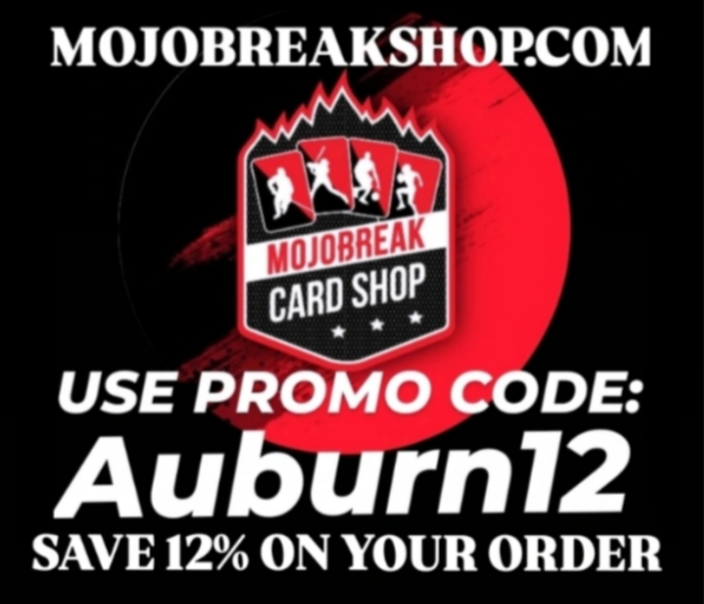Sports Trading Card Glossary Of Terms:
| Auto | The short version for Autograph. This is used by many on eBay to describe an Autograph card. |
| Autograph | A signature of an athlete or person |
| AU | Also short for Autograph or Auto card. |
| Base Card | These are the ‘main’ cards that usually include a wide variety of players across the entire league in which they play. These cards are usually the most ‘common’ cards found within the set. In most cases, these are non-autographed or jersey cards – however they can often be serial numbered in sets like 2010/11 Panini Limited Hockey. |
| Base RC Card | Most sets of cards come with a base set – composed of base cards of players from around the league. Typically rookies (or the leagues 1st year players) are included within the base set as well. These are the players ‘Base RC’ – Be aware that most sets will have either Autograph Parallel and/or Insert Sets that are often considered ‘RC Card’ as well. |
| Base Set | Usually refers to the set (or group) of Base Cards within a particular set. For Example: 2010/11 Panini Timeless Treasures Basketball – the ‘Base Set’ are cards #1 – 100. Cards #101 – #150 are Autographed RC Cards – and are NOT considered apart of the ‘Base Set’ in most cases. |
| Blaster Box | Sometimes known as a ‘Retail Box’ – these are often found at Target, Wal-Mart and other large retailers. The blaster box often contains 5 – 10 Packs of a retail product … sometimes guaranteeing an autograph or memorabilia hit (sometimes not). They are often priced at $9.99 – $19.99 – $29.99 with variations between each sport and brand. The packaging is usually a small rectangular cube. |
| Book Value | Often referring to Beckett or another Price Guide that publishes large lists of values for cards. Typically given in a range Lo – Hi based on market conditions and other factors when selling the card. Most collectors feel the majority of Book Prices are higher than what you can typically get for them on the open market or online auction houses like eBay. |
| Case | Could refer to the plastic you keep cards in, but in this example – we are referring to a case of product. Most boxes of cards come shipped in cases (or a case) … basically a box with the companies logos and seal/tape showing that it’s a case of the product. Typically buying cases means you get a ‘case hit’ and/or you get cards that fall every couple of boxes. Most hobby shops or dealers buy product by the case and sell the individual boxes for a small profit. |
| Case Hit | When you buy a case of product, you get 3, 6, 8, 12+ boxes of the product sealed in the factory/companies box. Usually every product has big name autographs, book cards, cut autographs and other nice cards that fall 1 or 2 per case (sometimes more). In some cases I’ve seen Panini ‘guarantee’ you get 2+ autographs from a group of top players per case. These cards are considered case hits. |
| Checklist | A list of all the cards within a particular set or subset. Could also refer to a list of any group of cards that you are trying to collect. |
| CMB | Short For: Check My Bucket —- Originally when Photobucket was the main place to store/share photos, collectors on forums would post Check My Bucket of photos for cards to trade. It is shortened to CMB when the user wants you to check out their photo album link to but/sell/trade cards on forums. |
| COMC | Short for: Check Out My Cards – a website where you can buy/sell cards. |
| ERR | Error Card – More common in cards Pre-Year 2000, often a miss-print or other error on the card. Sometimes followed by a COR or Corrected version that corrects the error on the previous print-run. One of the most famous ERR cards is the 1990 Topps Frank Thomas NNOF (No Name On Front) which can still sell for large values when sold. |
| Hobby Box | Pre-Internet days, you had Hobby Shops (sports cards only) and Retail Shops (Target, Wal-Mart like stores that sell everything) — most products came in a retail form and a hobby form, with the latter (hobby) usually containing better insert card odds and often more cards per pack/box. Only sports card stores (Hobby Stores) could sell hobby boxes, while Target and Wal-Mart could only sell the Retail Versions. The only thing that has changed is that you can buy Hobby Boxes online and on eBay. |
| Insert Card | Most products contain insert cards, which broadly could be all cards not in the base set. Most people consider an insert card to be a card that has a different design/numbering than the base set … and most products have several insert cards. Creative names are usually made for the insert set, such as ‘Beam Team’ – ‘Power Picks’ – ‘All-Stars’ … ect. |
| Manufactured Patch | This refers to the patch on the card being ‘manufactured’ or just simply made in a factory specifically for that card. The player(s) on the front never used that material … its simply material or Patches instead of traditional cardboard. Be very careful not to be fooled that these are ‘Game Used’ or are connected to the player/team in anyway. |
| Rack Pack | A type of pack configuration designed to hang from a stores ‘rack’ – These are common at retail stores like Target and WalMart… hanging down they appear to be 2-3 packs joined together. Depending on the product, these are usually priced in the $5.99 – $7.99 range. |
| Refractor/REF | Topps has many sets that use the Refractor technology on cards, most notably Bowman Chrome and Topps Chrome. Introduced originally in Topps Finest, these cards ‘refract’ light, or in other words … they create a rainbow like effect on the surface of the card that shines when you rotate in light. The original Topps Finest refractors didn’t have any way to tell it was a refractor unless you held it up to light … which made you go through each card to check. Now they state ‘Refractor’ on the back, and are often serial numbered. |
| Release Date | Used by manufactures (Topps, Panini Upper Deck) to announce when a box/set is going to be available to the public. These are often ‘pushed back’ or delayed due to product manufacturing, getting signatures/jerseys for the cards … ect. |
| Relic Piece | A term used mainly by Topps, referring to some type of material (jersey, pants, bat, base, ball, ect) that is included on the card. Be sure to find out if the Relic Piece is ‘Game Used’ – ‘Event Used’ – ‘Player Worn’ – ‘Manufactured’ – or other variation….typically this information is stated on the card itself. |
| Serial Number | In the early 90’s card companies started putting serial numbers — or the actual print run — directly on the card. You’d often see Rookie Cards serial numbered and some insert and parallel cards as well. Keep in mind that the serial number refers to that particular card, Bowman Chrome for example has Blue, Purple, Red, Orange and other parallels all serial numbered to a different amount. So you might have a Thomas Neal #10/500, but he might have other serial numbered parallels within the same set. |
| Set | Typically this refers to a particular ‘brand’ or version of cards made by manufactures. For example, Topps Chrome, SP Authentic, and National Treasures are all ‘sets’ made by different manufactures. The term is also used when you put together a ‘set’ of cards … for example 2010 Topps Baseball Base ‘Set’ refers to just the ‘base cards’ within the entire 2010 Topps Baseball set. |
| SPA | Often short for SP Authentic – or Upper Deck’s SP Authentic line of cards. |
| Sub Set | The more common use of this term is ‘Insert Card/Set’ – It usually refers to a grouping of cards within an entire Set that are related. For example, 2010 Allen & Ginter Baseball has many Sub-Sets or Inserts such as Worlds Greatest Wordsmiths, National Animals, Sailors … ect. |
| TTM | Short for Through The Mail – the process of sending an athlete/celebrity an item to sign in the hopes that they will return it via the mail. |
| TTT | Often short for Topps Triple Threads line of cards. |
| XRC | This is used by price guides to denote a players first card that for some reason is not considered his “true” or only rookie card. Examples include Michael Jordan who’s ’84-’85 Star is considered his XRC and the ’86-’87 Fleer is considered his RC. |


